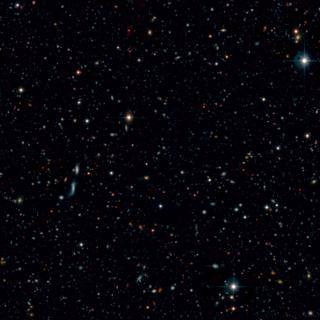Bibcode
Oteo, I.; Sobral, D.; Ivison, R. J.; Smail, I.; Best, P. N.; Cepa, J.; Pérez-García, A. M.
Bibliographical reference
Monthly Notices of the Royal Astronomical Society, Volume 452, Issue 2, p.2018-2033
Advertised on:
9
2015
Citations
53
Refereed citations
50
Description
We present a detailed multiwavelength study (from rest-frame ultraviolet
to far-infrared) of narrow-band selected, star-forming (SF) Hα
emitters (HAEs) at z ˜ 2.23 taken from the High-Redshift(Z)
Emission Line Survey (HiZELS). We find that HAEs have similar properties
and colours derived from spectral energy distributions as sBzK galaxies,
and probe a well-defined portion of the SF population at z ˜ 2.
This is not true for Lyα emitters (LAEs), which are strongly
biased towards blue, less massive galaxies (missing a significant
percentage of the SF population). Combining our Hα observations
with matched, existing Lyα data, we determine that the Lyα
escape fraction (fesc) is low (only ˜4.5 per cent of
HAEs show Lyα emission) and decreases with increasing dust
attenuation, ultraviolet continuum slope, stellar mass and star
formation rate (SFR). This suggests that Lyα preferentially
escapes from blue galaxies with low dust attenuation. However, a small
population of red and massive LAEs is also present, in agreement with
previous works and indicating that dust and Lyα are not mutually
exclusive. Using different and completely independent measures of the
total SFR, we show that the Hα emission is an excellent tracer of
star formation at z ˜ 2 with deviations typically lower than 0.3
dex for individual galaxies. We find that the slope and zero-point of
the HAE main sequence at z ˜ 2 strongly depend on the
dust-correction method used to recover the SFR, although they are
consistent with previous works when similar assumptions are made.
Related projects

Evolution of Galaxies
Galaxy evolution is a crucial topic in modern extragalactic astrophysics, linking cosmology to the Local Universe. Their study requires collecting statistically significant samples of galaxies of different luminosities at different distances. It implies the ability to observe faint objects using different techniques, and at different wavelengths
Jorge
Cepa Nogue